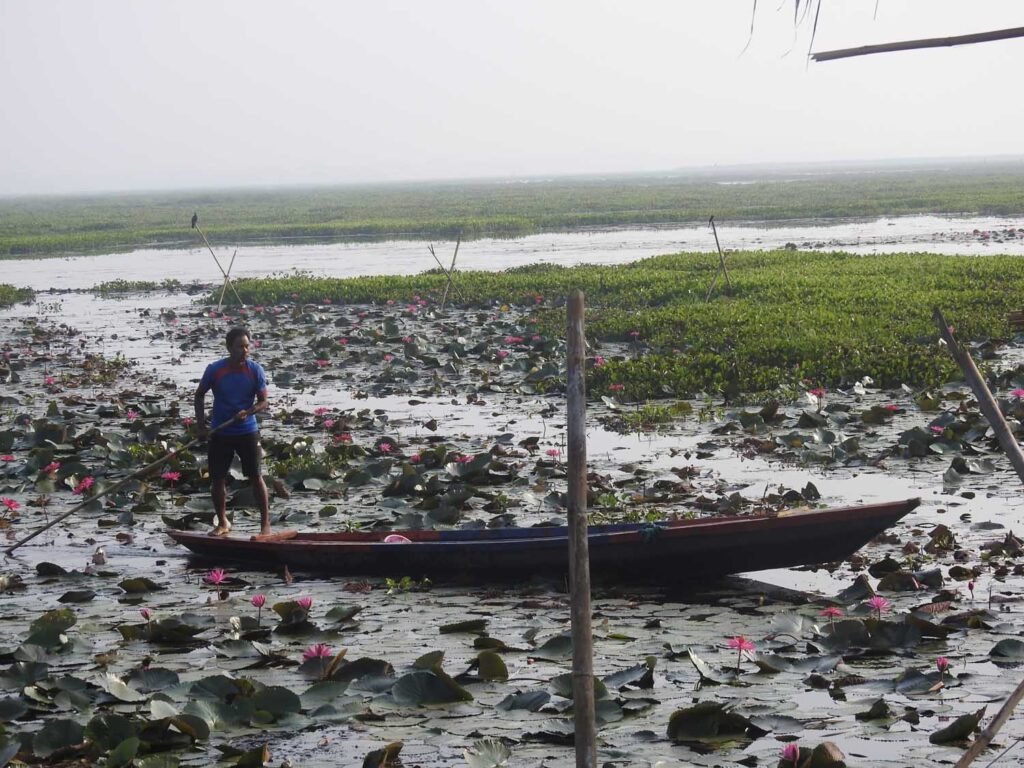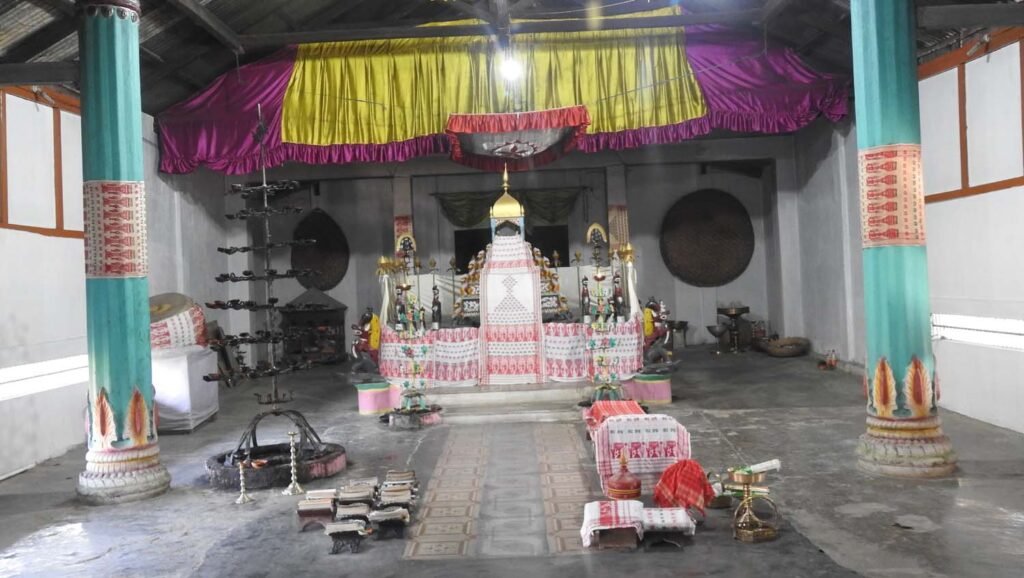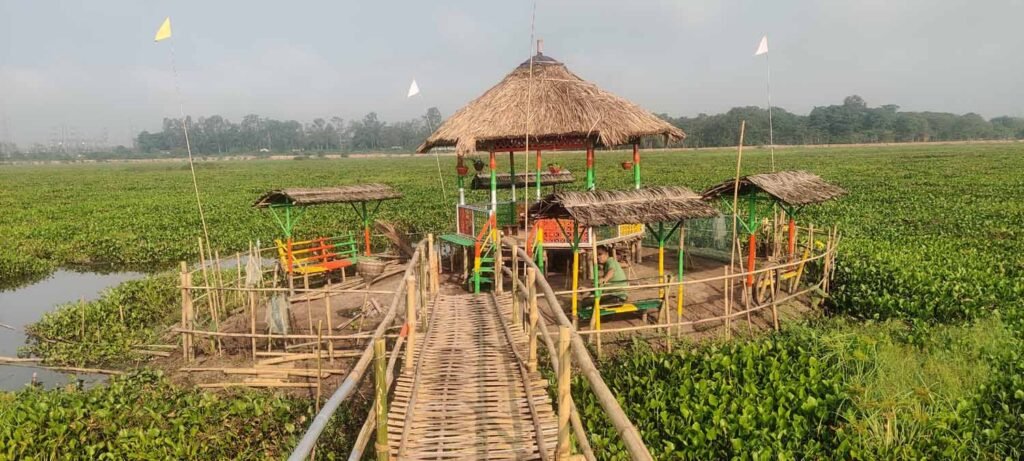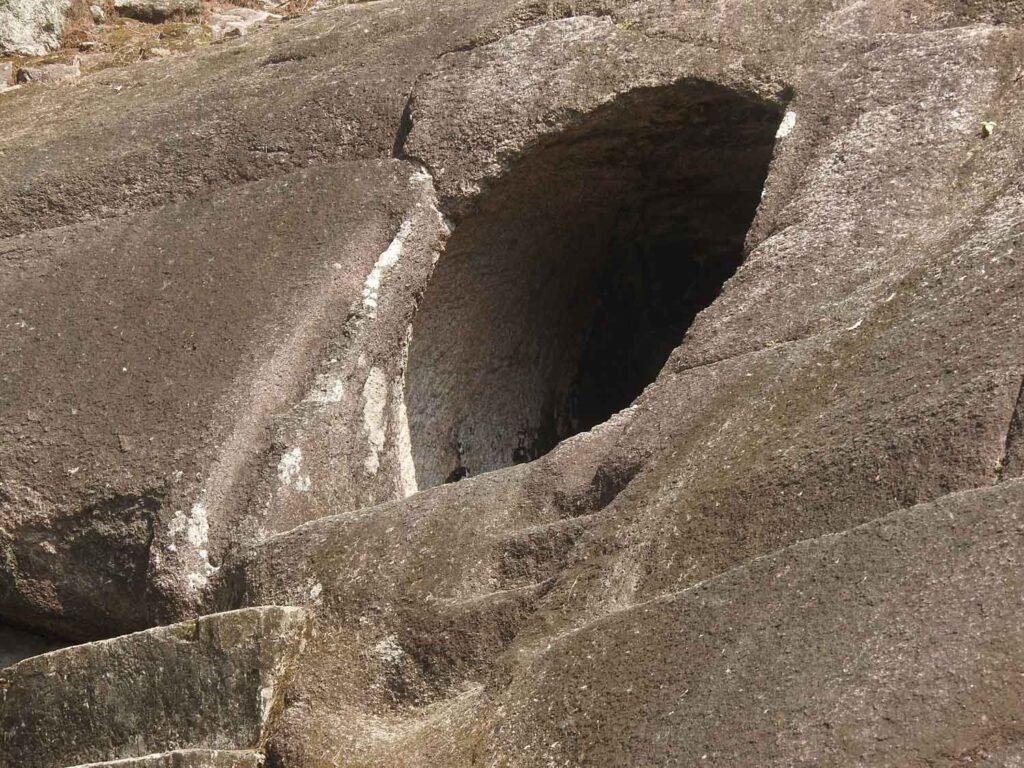Assam’s beels (wetlands) can take your breath away. These freshwater lakes, some of which stretch as far as the eye can see—Son-Beel in Barak Valley is in fact Assam’s largest—celebrate nature and culture in quiet symphony.
In the Brahmaputra valley, Urpad Beel is located near Agia, just 10 km before reaching Goalpara town (150 km from Guwahati). Serving as the source of Jinjiram, a tributary of the Brahmaputra, and home to a host of avifauna—all of which you espy as your boatman weaves in and out among the abundance of water lilies, water hyacinths and lotuses—the beel is a paradisiacal experience. Especially in the morning hours when the waters glisten through water lilies in full bloom. Here and there, you also find bamboo bridges and shelters to soak in tranquillity and splendour. According to eBird, a widely used online platform for birders to record and share their bird observations, Urpad Beel has documented sightings of more than 130 bird species, including both resident and migratory varieties. And, if there on a full moon evening, you can even be enthralled by the spectacle of the moon ascending over Urpad.


On entering Goalpara town, you can dive into the rich history of Assam’s Vaishnavite movement at the Shyamrai Satra, founded around three centuries back through a generous grant of the Mechpara zamindar. Marvel at its main hall and diverse structures, echoing more than two centuries of committed worship of Lord Krishna and ekasaran naam dharma of Mahapurusha Srimanta Sankaradeva by celibate monks (kewaliya bhakats).
Ichthyophiles will love Kumri Beel, merely 1 km prior to Narayan Setu and 18 km from the town. It is best to be here before dawn—simply to watch skilled fishermen artistically weave through its waters and ply their trade. Capture delightful photos and reels when fansi jal, musari jal, langi jal and koi jals are thrown in to secure an array of fish species and a cacophony follows, when the catch is displayed before local fish vendors.


Continue on to Jogighopa in Bongaigaon district, 7 km away, and visit five rock-cut ancient caves and remains that date back to the early medieval period. Likely to have been used by yogis to meditate (from jogi or yogi and gopha meaning cave), additional caves can be found in Suryapahar, an archaeological site within the Goalpara district. The largest in Jogighopa measures 2.10m x 1.80m x 1.93m, with other similar but smaller caves—each featuring platforms of brick and mud that were built later.
Experience the beauty of Assam, where every moment becomes a celebration of nature and history.

